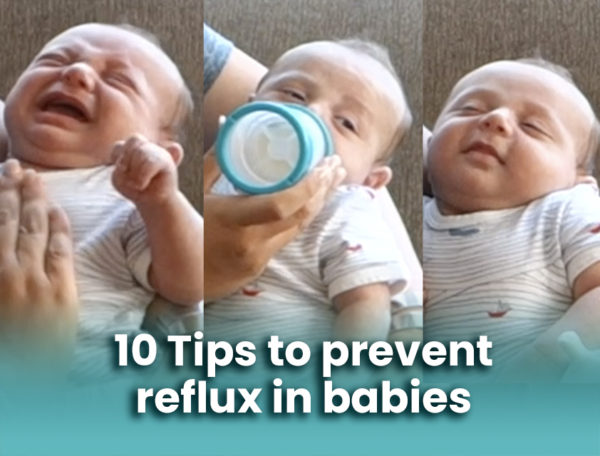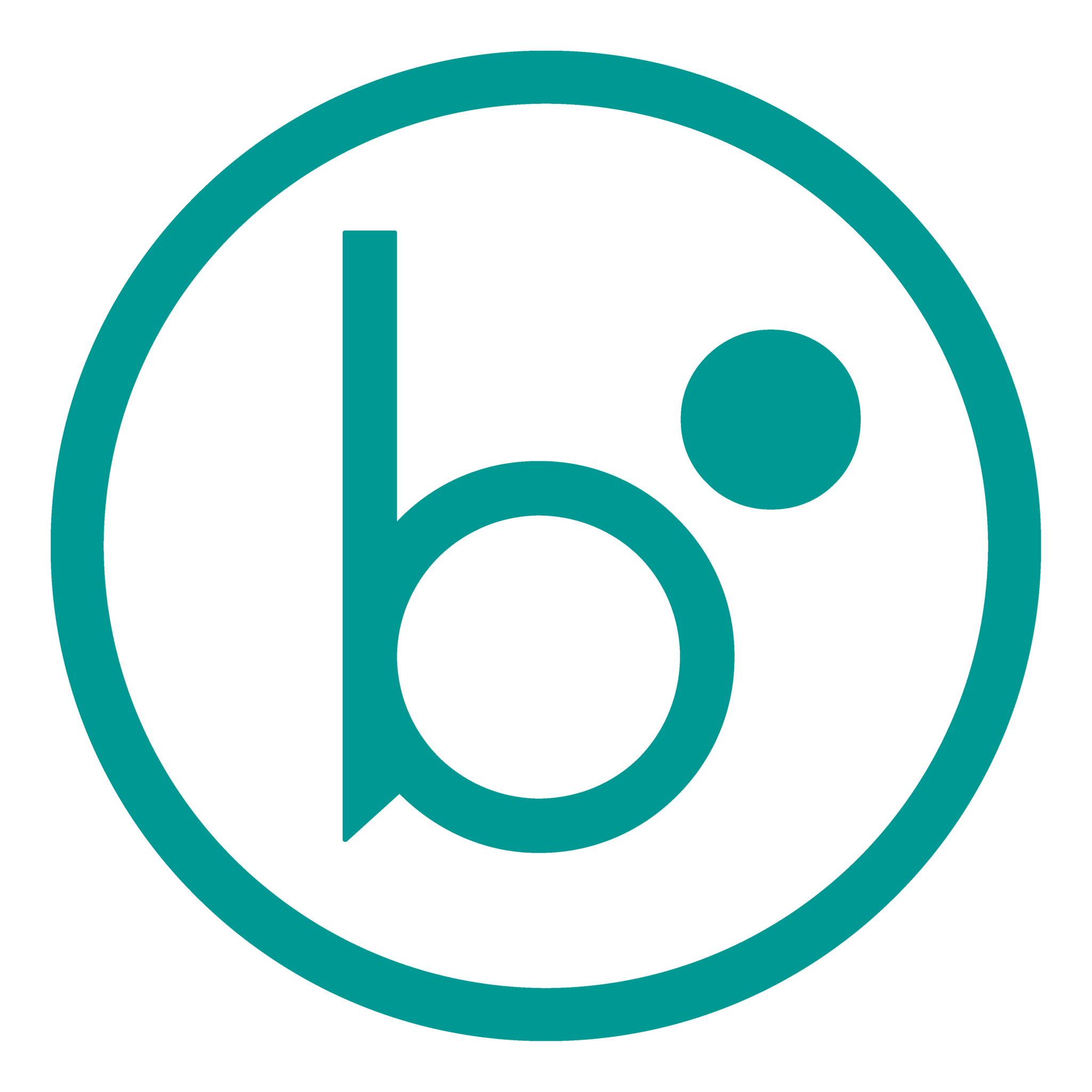
Tips to prevent reflux in babies topic is probably at the top of every parent’s list. The National Institutes of Health states that 2 out of 3 4-month olds suffer from severe reflux symptoms, A.K.A. GER (gastroesophageal reflux). Without a doubt, this is an alarming statistic. 8 out of 10 moms supplement breastfeeding with bottles of formula due to low milk supply. The midnight colic episodes follow as soon as baby bottles are introduced (with formula or breastmilk). Babies and parents suffer through hours of crying due to painful gas pains, leading to colic, spit-ups, —and quickly— a GER diagnosis. After finding what works, we compiled a list of the best 10 tips to prevent reflux in babies. But first, let’s learn what reflux is.
Reflux, allergies or lactose intolerance?
In order to prevent something, we need to first identify it, then find the source and nip it in the bud. Acid Reflux refers to the stomach acid regurgitation into the esophagus. Common symptoms include spitting, vomiting, crying, and frequent coughing. Spit-up symptoms are also present when babies have a milk protein allergy, along with rashes around the lips, cheeks, or chin. If your baby is lactose intolerant, spit-ups, cough, and phlegm will be heavily present. You must check with your pediatrician to get the correct diagnosis. However, if after changing your diet, so your breastmilk doesn’t contain allergens or changing the formula to a soy-based one and your baby’s symptoms haven’t improved, I strongly suggest you try my tips.
10 tips to prevent reflux in babies
10 best tips to prevent reflux in babies
- Avoid air-swallowing
Stirred, not shaken!. Be sure to stir the breastmilk or formula to mix instead of shaking the contents. Shaking creates lots of air bubbles mixing with the milk that will end up in your baby’s tummy. You want to minimize bubbles as much as possible. Try mixing the formula in a separate container so you can stir with a spoon and make sure it’s fully dissolved. Don’t let the baby cry before meals; crying leads to a lot of air-swallowing. Avoiding air-swallowing is the one of the best tips to prevent reflux in babies. If nothing else, make this your priority.
- Use an Air-free feeding system
There aren’t that many feeding devices offering true air-free feeding. If you see empty space, as in traditional bottles, they are not air-free. Bare® Air-Free feeding system works like a syringe. You can push the air out before feeding your baby. This device dispenses milk with suction only. Hence, you can feed your baby in an upright position, as prescribed by Dr. Lightdale and the AAP (American Academy of Pediatrics). Feeding against gravity and upon suction lets the baby control the flow and pace of feeding.
A pilot clinical study showed that the use of Bare® Air-free reduced the infant’s GERD symptoms by 52%. Moreover, 75% of babies no longer met the clinical criteria for GERD after two weeks of usage. - Feed your baby in a vertical-upright position
“A baby with reflux has fewer symptoms if they are held upright.” “Placing an infant in a semi-inclined position does not make the condition better. In fact, it may worsen GER and you should avoid it.” says Jenifer R. Lightdale (M.D., M.P.H., AGAF, FAAP). She is chair of the AAP Section on Gastroenterology, Hepatology and Nutrition Executive Committee.
There are some breastfeeding positions to keep your baby upright. These include the “Australian hold” and “Upright football.” Check out the Best feeding positions for babies with acid reflux. If you do not breastfeed, use an air-free feeding device to feed in an upright position. - Let the baby control the flow and pace of feeding
Flow and pace control is a natural process while breastfeeding. Suck and swallow feeding patterns prepare the throat, esophagus, and stomach muscles to complete the sequential digestion process. Baby bottles tend to pour more milk with poor or no suction. In addition, they work with gravity, which means they have to be turned upside down to feed and recline or lay down the baby. A device like Bare® Air-free, which works against gravity and with suction, can provide the most similar experience to natural feeding. Babies must control the feeding process to prevent reflux.
- Smaller but frequent feedings
If your baby is already suffering from the painful symptoms of reflux, most likely there is irritation in the esophagus, larynx and throat. You need to intervene as soon as possible!. Smaller, frequent feedings are one way to let your baby heal fast. The 0-4-month-old baby’s stomach is tiny and cannot hold —and much less— digest 4oz or 5oz of milk at once. Try starting the feedings earlier with just 2oz of milk (be sure your baby is held in an upright position and use Bare® Air-free). Then, stop for 20 -30 minutes. Then feed the remaining 2oz again. Set the 2-hour feeding schedule for a few days. After a week, you can wean the baby off this schedule and feed every 3 hours, then 3.5 hours, etc.
- Be sure the latch is correct while breastfeeding
Work with a feeding professional to help you determine if your baby’s latch is adequate. If not, they will work with you and your baby to achieve a perfect latch. Nipple shields often infiltrate air between the breast and the shield and between the shield and the baby’s mouth. If you are using a nipple shield and your baby is showing symptoms of GER/GERD, talk to a feeding professional and consider trying Bare® Air-free.
- Take breaks to burp your baby
As mentioned before, chugging milk is not recommended. It leads to air-swallowing, gas buildup, overfeeding, regurgitation, poor digestion, and acid reflux. A “slow-flow” nipple from traditional bottles can lead to a lot of air-swallowing too. Allowing the baby to control the flow and pace of feeding is the most natural way of feeding and has proven to eliminate a lot of feeding discomfort. It is recommended to deliberately interrupt the feeding and lightly tap the baby’s back to get any air buildup or gas out. Breaks also allow the baby’s body to process the food and digest it.
- Stick to schedule feedings
It’s a date!. In our recent breastfeeding tips, we talked about enjoying mealtimes. You can do this whether you breastfeed or bottle-feed. Treat it like it is; “a fancy meal” to be relished. Get on your favorite rocking chair, fit your favorite pillows around your body to keep you comfortable, get your favorite relaxing tunes playing, and enjoy the experience. Invite your partner to participate; you should both look forward to it. Set alarms to make sure you are ready for your baby. The goal here is to have a beautiful, joyful atmosphere, free of stress, to help your baby digest better.
- Do not overfeed
Do not overdo it! While a hungry baby will chug a whole bottle just because your current bottles may offer a free flow of milk, be sure not to overfeed. Let your baby control the flow and pace while feeding. If your baby is getting full and applies less suction than the beginning, it is time to stop the feeding. Bare® Air-free is designed to stop dispensing milk when your baby stops sucking to prevent overfeeding. This feature is an excellent projectile-vomit-stopper!
- Keep your baby upright after feeding
Keep your baby upright for 20-30 minutes after feeding. According to Mayo Clinic, this can reduce the symptoms. This posture lets gravity keep the acids and food in the belly while the digestion process happens. One comfortable way to hold babies upright is over the shoulder. The baby’s torso should be vertical, without slouching. Even if the baby burps, keep the 20-30 minute rule. Moreover, using a baby carrier lets you work while your baby is in an upright position.
